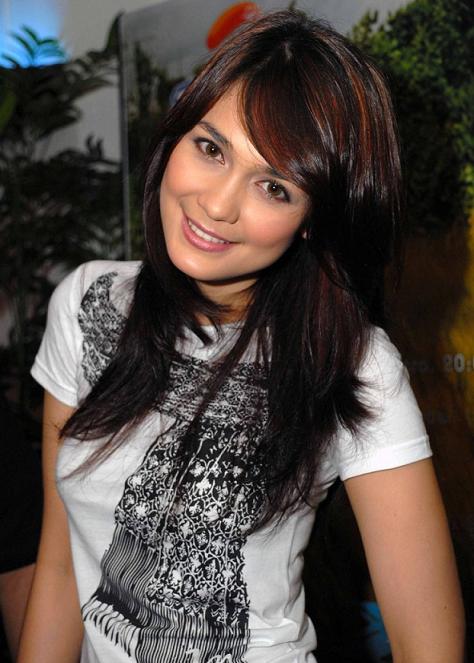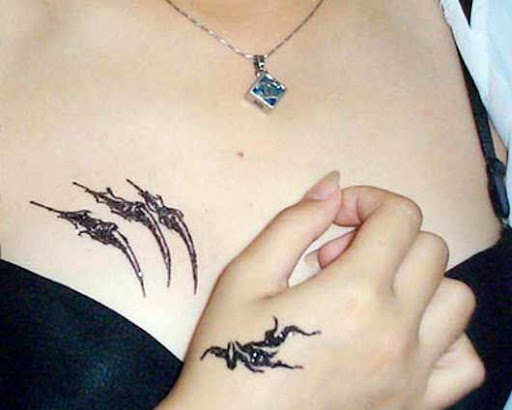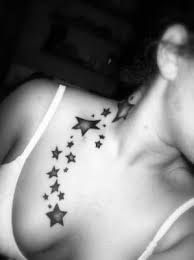He also put a little tattoo on the lower left abdomen.
Tuesday, June 15, 2010
Luna Maya tatto design
descriptions:
lunamaya is one Indonesian artist who has a penchant for wearing tattoos on her breasts. many images that stick in the body of sexy. many also one of them in pairs at right waist butterfly picture
lunamaya is one Indonesian artist who has a penchant for wearing tattoos on her breasts. many images that stick in the body of sexy. many also one of them in pairs at right waist butterfly picture
Thursday, June 3, 2010
Tattoo
Tattoos have served as rites of passage, marks of status and rank, symbols of religious and spiritual devotion, decorations for bravery, sexual lures and marks of fertility, pledges of love, punishment, amulets and talismans, protection, and as the marks of outcasts, slaves and convicts. The symbolism and impact of tattoos varies in different places and cultures. Tattoos may show how a person feels about a relative (commonly mother/father or daughter/son) or about an unrelated person.
Labels:
Tattoo
Tatoo Design Hand
Tattooing has been a Eurasian practice at least since around Neolithic times. Ötzi the Iceman, dating from the fourth to fifth millennium BC, was found in the Ötz valley in the Alps and had approximately 57 carbon tattoos consisting of simple dots and lines on his lower spine, behind his left knee, and on his right ankle. [19] Other mummies bearing tattoos and dating from the end of the second millennium BC have been discovered, such as the Mummy of Amunet from Ancient Egypt and the mummies at Pazyryk on the Ukok Plateau.Pre-Christian Germanic, Celtic and other central and northern European tribes were often heavily tattooed, according to surviving accounts. The Picts were famously tattooed (or scarified) with elaborate dark blue woad (or possibly copper for the blue tone) designs. Julius Caesar described these tattoos in Book V of his Gallic Wars (54 BC).
Tattooing in Japan is thought to go back to the Paleolithic era, some ten thousand years ago.[citation needed] Various other cultures have had their own tattoo traditions, ranging from rubbing cuts and other wounds with ashes, to hand-pricking the skin to insert dyes.
Tattooing in the Western world today has its origins in Polynesia, and in the discovery of tatau by eighteenth century explorers. The Polynesian practice became popular among European sailors, before spreading to Western societies generally.
Tattooing in Japan is thought to go back to the Paleolithic era, some ten thousand years ago.[citation needed] Various other cultures have had their own tattoo traditions, ranging from rubbing cuts and other wounds with ashes, to hand-pricking the skin to insert dyes.
Tattooing in the Western world today has its origins in Polynesia, and in the discovery of tatau by eighteenth century explorers. The Polynesian practice became popular among European sailors, before spreading to Western societies generally.
Tatto Design Girl
The OED gives the etymology of tattoo as "In 18th c. tattaow, tattow. From Polynesian tatau. In Tahitian, tatu." The word tatau was introduced as a loan word into English, the pronunciation being changed to conform to English phonology as "tattoo".Sailors on later voyages introduced both the word and reintroduced the concept of tattooing to Europe.
Tattoo enthusiasts may refer to tattoos as "Ink", "Tats", "Art", "Pieces", or "Work"; and to the tattooists as "Artists". The latter usage is gaining greater support, with mainstream art galleries holding exhibitions of both conventional and custom tattoo designs. Copyrighted tattoo designs that are mass-produced and sent to tattoo artists are known as flash, a notable instance of industrial design. Flash sheets are prominently displayed in many tattoo parlors for the purpose of providing both inspiration and ready-made tattoo images to customers.
The Japanese word irezumi means "insertion of ink" and can mean tattoos using tebori, the traditional Japanese hand method, a Western-style machine, or for that matter, any method of tattooing using insertion of ink. The most common word used for traditional Japanese tattoo designs is Horimono. Japanese may use the word "tattoo" to mean non-Japanese styles of tattooing.
In Taiwan, facial tattoos of the Atayal tribe are named "Badasun"; they are used to demonstrate that an adult man can protect his homeland, and that an adult woman is qualified to weave cloth and perform housekeeping.[citation needed]
The anthropologist Ling Roth in 1900 described four methods of skin marking and suggested they be differentiated under the names of tatu, moko, cicatrix, and keloid.
Tattoo enthusiasts may refer to tattoos as "Ink", "Tats", "Art", "Pieces", or "Work"; and to the tattooists as "Artists". The latter usage is gaining greater support, with mainstream art galleries holding exhibitions of both conventional and custom tattoo designs. Copyrighted tattoo designs that are mass-produced and sent to tattoo artists are known as flash, a notable instance of industrial design. Flash sheets are prominently displayed in many tattoo parlors for the purpose of providing both inspiration and ready-made tattoo images to customers.
The Japanese word irezumi means "insertion of ink" and can mean tattoos using tebori, the traditional Japanese hand method, a Western-style machine, or for that matter, any method of tattooing using insertion of ink. The most common word used for traditional Japanese tattoo designs is Horimono. Japanese may use the word "tattoo" to mean non-Japanese styles of tattooing.
In Taiwan, facial tattoos of the Atayal tribe are named "Badasun"; they are used to demonstrate that an adult man can protect his homeland, and that an adult woman is qualified to weave cloth and perform housekeeping.[citation needed]
The anthropologist Ling Roth in 1900 described four methods of skin marking and suggested they be differentiated under the names of tatu, moko, cicatrix, and keloid.
Labels:
tatto design girl
tattoos for girls.
A tattoo is a marking made by inserting dark, indelible ink into the dermis layer of the skin to change the pigment for decorative or other reasons. Tattoos on humans are a type of decorative body modification, while tattoos on animals are most commonly used for identification or branding. The term "tattoo" or from Tahiti, "Tatau" is first referenced by Joseph Banks, the naturalist aboard Cook's ship the "Endeavour" in 1769 where he mentions it in his journal. To paraphrase. he states, "I shall now mention the way they mark themselves indelibly, each of them is so marked by their humor or disposition".
Tattooing has been practiced for centuries worldwide. The Ainu, the indigenous people of Japan, traditionally wore facial tattoos. Today one can find Berbers of Tamazgha (North Africa), Māori of New Zealand, Arabic people in East-Turkey and Atayal of Taiwan with facial tattoos. Tattooing was widespread among Polynesian peoples and among certain tribal groups in the Taiwan, Philippines, Borneo, Mentawai Islands, Africa, North America, South America, Mesoamerica, Europe, Japan, Cambodia, New Zealand and Micronesia. Despite some taboos surrounding tattooing, the art continues to be popular in many parts of the world.
Tattooing has been practiced for centuries worldwide. The Ainu, the indigenous people of Japan, traditionally wore facial tattoos. Today one can find Berbers of Tamazgha (North Africa), Māori of New Zealand, Arabic people in East-Turkey and Atayal of Taiwan with facial tattoos. Tattooing was widespread among Polynesian peoples and among certain tribal groups in the Taiwan, Philippines, Borneo, Mentawai Islands, Africa, North America, South America, Mesoamerica, Europe, Japan, Cambodia, New Zealand and Micronesia. Despite some taboos surrounding tattooing, the art continues to be popular in many parts of the world.
Labels:
tattoos for girls.
Subscribe to:
Posts (Atom)
















